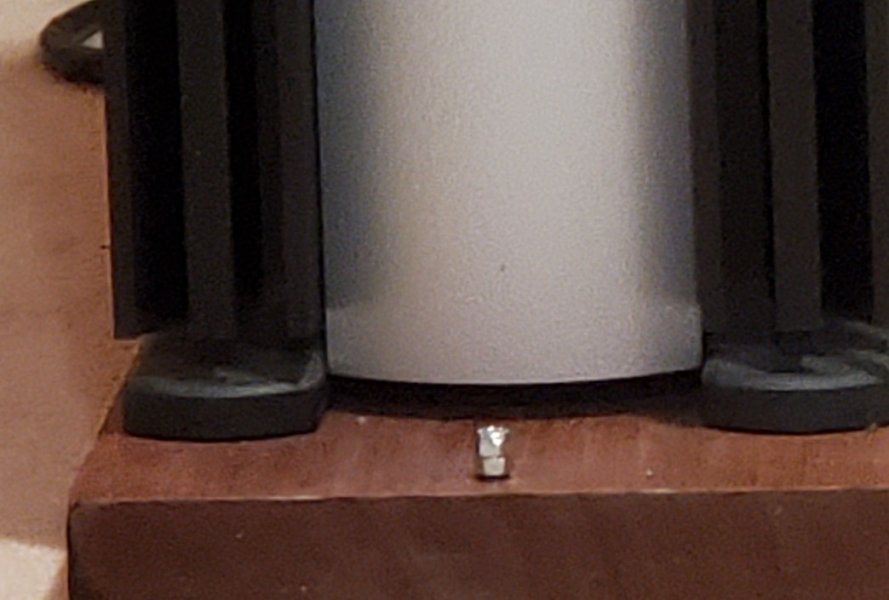We have SRA platforms here at the shop as well. I like them a lot. Since they have their own suspension you really don't have to worry too much about what you place them on. My impression of the SRA platform is that its meant as you say to isolate the equipment from vibration. I found that the SRA helped even if you don't use points between the equipment and the platform, but it seemed a bit better when we did.Okay - but that is not born out in practice in many cases. I use my SRA Virginia-Class amp stands as a model. I know you and Kevin know each other so I'll defer to him. SRA says to put the component on the platform as is, with nothing between the component's feet and the platform. The somewhat hard rubber(?) feet of my amps do not make what I'd call a rigid coupling with the top of the amp stand - yes more rigid than Sorbothane (what isn't?) The amp stand itself sits on the floor via points/spikes. The outer platform the amp sits on is decoupled (partially by vacuum.) from from the interior platform that holds the feet - that isolates the platform the amp sits on from the floor. Viscoelastics and proprietary paint absorb energy from the component and direct it away from the component.
While a squishy separates a component from a shelf it can still intake energy from above and below. I suppose they can be isolators in a limited sense though I've always understood them more as dissipators/disintegrators/scatterors. I agree about platforms when they are systems.
I believe there can be different ways to build a platform with different constructions yielding different results. And I agree that 'you have to work this stuff out.'
Anytime you see isomeric devices used, they are performing the work of isolation. A friend of mine who is a mechanical engineering professor at the UofM gave me a lesson on that topic years ago when I was assisting him mounting a Norton engine back into its frame (the Norton Commando 850 engine was isomerically mounted).
My old Scully lathe had a table that used a platform with isomeric footers that engaged the table. The platform used dissimilar materials to reduced vibration and had cutouts and footers attached to mount the actual lathe and its cutter drive transmission. Obviously they were very concerned about how vibration might affect the final product! Ampex used isomeric mounts on their circuit boards in their famous 351 tube record electronics (to reduce the effectsof microphonics); while isomerics always will dissipate some energy, their primary function is always isolation.



